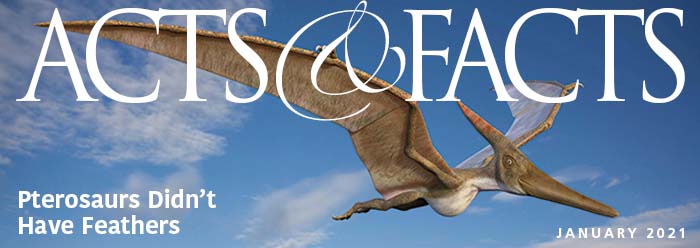A team of researchers from Israel and the U.S. are searching for animals that can edit their own RNA molecules. They encountered a standout. Unlike other animals that edit only a small fraction of the RNA that spells out protein sequences, squid cells edit their RNA by the bushel. The team described their results in 2015. Since then, they have dived deeper to look for more answers. Along the way, they stumbled over a difficult question that challenges the evolutionary paradigm.1
Cephalopods include the squid, octopus, cuttlefish, nautilus, and snail categories. The researchers examined representatives from each one to reveal that the squid, octopus and a cuttlefish make extensive internal RNA edits, while the nautiluses and snails they examined do not. Squid, cuttlefish, and octopi flash arrays of bioluminescent colors across their skin—unlike snails and nautiloids. Unique nerve networks coordinate these fantastic kaleidoscopes.
Squid, cuttlefish, octopi flash arrays of bioluminescent colors across their skin—unlike snails and nautiloids. ![]()
In RNA editing, a DNA sequence gets copied and transferred into a length of RNA. Then, a unique enzyme clamps onto the specially designed RNA structures. Once attached, it can swap out certain chemicals within the RNA structure to alter the RNA’s coded message. The processed RNA produces a protein unlike what would have emerged if the RNA had remained unaltered.
The team, publishing this time in the journal Cell, confirmed that the enzyme in these high-paced RNA-editing cephalopods replaces adenine with inosine. The team found RNA edits going on inside nerve cells. They deduced between “80 and 130 thousand editing sites in protein-coding regions.”2 They wrote, “This process has the capacity to recode codons and fine-tune protein function.”2
The study authors noted how the enzyme works. It binds to a certain three-dimensional RNA structure like a can opener latching onto the top lip of a can of green beans. And just like a can opener cannot open a bag of chips this way, but only cans with the same-sized edges, the enzyme only works on specifically-shaped RNA.
Working backward, this means that the DNA that specifies the editable RNA must maintain a very similar sequence over countless generations. Even a small change—a mutation—would make the lip of that can either too large or too small, or could ruin the necessary can opener shape. In like manner, if a cell wants that editable RNA, it will need just the right shape for the can opener enzyme to latch on and do its thing. In cells, DNA maintains that shape by keeping the same sequence of chemicals—the four familiar bases—in just the right order.
Put another way, this study revealed “an unanticipated genome rigidity required to maintain the extensive transcriptome recoding [RNA editing].” Why didn’t they anticipate this? Why did they call this rigidity “most surprising?”2 Probably because they know that rigid genomes cannot evolve. Evolution requires the opposite—flexible genomes. DNA that cannot change without compromising RNA recoding cannot evolve.
The study authors concluded that these genetically unique creatures have traded traditional DNA evolution for the ability to fine-tune their own proteins through RNA editing.3 But does this address the Architeuthis in the room?
DNA that cannot change without compromising RNA recoding cannot evolve. ![]()
If the DNA is too rigid to evolve, then…how did it evolve? In other words, how could it originate by evolution if evolution by DNA mutation is off the table? In light of the ultra high-tech ability of these animals to optimize their own vital genetic material using precise RNA re-coding molecular machines and procedures, these researchers should wonder if it evolved at all.
References
1. Alon, S. et al. 2015. The majority of transcripts in the squid nervous system are extensively recoded by A-to-I RNA editing. eLife. 4: e05198. DOI: 10.7554/elife.05198.
2. Liscovitch-Brauer, N. et al. 2018. Trade-off between Transcriptome Plasticity and Genome Evolution in Cephalopods. Cell. 169 (2): 191-202.
3. The Liscovitch-Brauer team wrote, “Thus, although extensive recoding presents the species with a route toward proteome complexity, it comes with its own price tag. The constraints required to preserve thousands of recoding sites reduce the accumulation of mutations at positions in the proximity of an editing site, slowing down the rate of conventional, DNA-level evolution.”
*Brian Thomas is Science Writer at the Institute for Creation Research.







